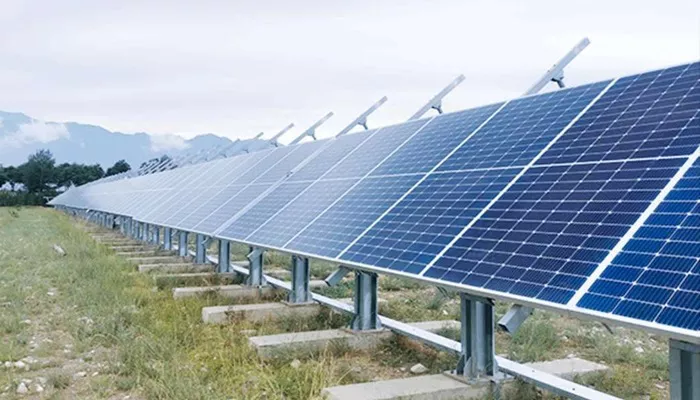In a world where energy independence and sustainability are becoming increasingly important, Mango solar generators offer a practical solution for various power needs. Whether you’re looking to power your home during an outage, or keep your gadgets charged on an outdoor adventure, knowing how to use a Mango solar generator effectively is key.
Step 1: Unboxing & Familiarization
When you first receive your Mango solar generator, carefully unbox all the components. This usually includes the generator unit itself, solar panels (if sold separately or as a bundle), charging cables, and an instruction manual. The instruction manual is your go – to guide, as it contains specific details about your model. Different Mango solar generators may vary in power output, battery capacity, and available ports. Some models come with a digital display that shows real – time information such as battery level, input and output power, while others use simple LED indicators. Take the time to understand the functions of each button and port on the generator.
Step 2: Charging the Generator
Solar Charging
If your Mango solar generator is designed to be charged by solar panels, this is the most eco – friendly way to power it up. Find an open area with maximum sunlight exposure. In the Northern Hemisphere, south – facing locations generally receive the most sunlight throughout the day. Place the solar panels on a flat, stable surface, making sure they are angled towards the sun. Connect the solar panels to the generator using the provided cables. The charging time depends on several factors, including the intensity of sunlight and the size of the solar panels. For example, on a clear, sunny day, a smaller Mango solar generator with a matching – sized solar panel might take 4 – 6 hours to reach a full charge. Larger generators with higher – capacity batteries may require 8 – 10 hours or more.
Alternate Charging Methods
Many Mango solar generators also support charging via a household electrical outlet. This can be extremely useful when sunlight is scarce. Use the charging cable that came with the generator. Plug one end into a standard 120V or 220V (depending on your model) wall outlet, and the other end into the charging port on the generator. Charging from a wall outlet is generally faster than solar charging. A medium – capacity Mango solar generator might take only 2 – 3 hours to charge fully from a wall outlet.
Step 3: Assessing Your Power Needs
Before connecting any devices, make a list of the appliances or electronics you plan to power with the Mango solar generator. Check the power requirements of each device. You can usually find this information on the device itself or in its user manual. For instance, a smartphone charger typically requires 5 – 10 watts, a laptop charger ranges from 30 – 90 watts, and a small refrigerator may need 100 – 200 watts. Add up the power ratings of all the devices you intend to use simultaneously. It’s crucial not to exceed the maximum power output of the Mango solar generator. Overloading the generator can cause it to shut down, and in extreme cases, damage both the generator and the connected devices.
Step 4: Connecting Your Devices
Once the generator is charged and you know your power needs, it’s time to connect your devices. Mango solar generators are equipped with a variety of output ports. There are USB ports for charging small electronics like smartphones and tablets, and standard AC outlets for powering larger devices such as laptops, lights, and small appliances. Use the appropriate cables to connect your devices to the generator. Plug a USB cable into the generator’s USB port to charge your phone, and an AC power cord into the AC outlet to power a lamp. Ensure that the connections are secure to prevent any accidental disconnection.
Step 5: Monitoring & Managing Power Usage
As your devices are running on the Mango solar generator, keep an eye on the generator’s battery level. Some models have a battery – level indicator on the control panel, which could be a digital readout showing the percentage of remaining battery, or a series of LED lights representing different battery levels. When the battery level starts to drop, you may need to turn off some non – essential devices to conserve power. For example, if you’re using both a laptop and a lamp and the battery is running low, you might turn off the lamp if you don’t need the light immediately to extend the laptop’s usage time.
Step 6: Storage & Maintenance
When you’re not using the Mango solar generator, store it in a cool, dry place. If your generator has a lead – acid battery, it’s important to charge it periodically to prevent sulfation, which can shorten the battery’s lifespan. For lithium – ion batteries, it’s recommended to store the generator with a charge level of 50% – 60%. Regularly inspect the solar panels (if applicable) for any signs of damage or dirt. If the panels are dirty, you can clean them with a soft cloth and water. This helps to maintain their efficiency.
Conclusion
Using a Mango solar generator can provide you with a reliable source of power during emergencies at home or for your outdoor activities. By following these steps – getting familiar with the generator, charging it correctly, assessing your power needs, connecting devices, monitoring power usage, and maintaining the generator – you can make the most of its capabilities. Remember that different models may have specific operating instructions, so always refer to your product’s manual for the best results. With proper use and maintenance, your Mango solar generator can serve you well for years to come.

